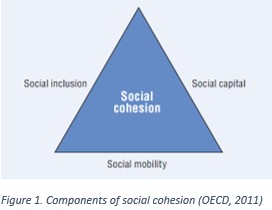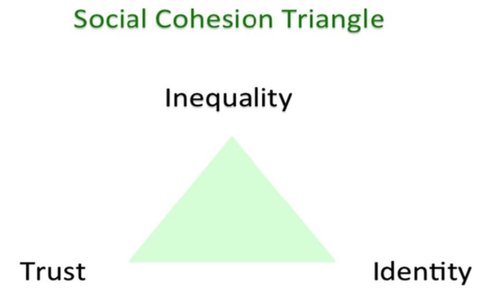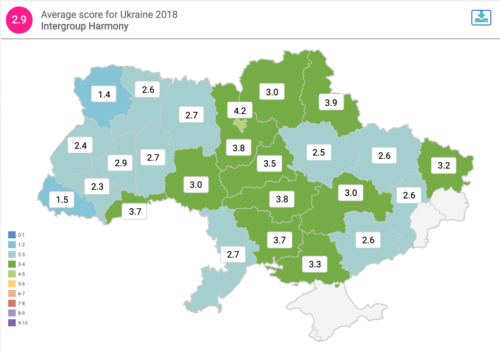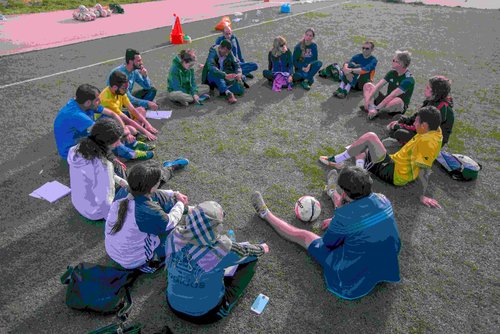OECD Definition of Social Cohesion
Key facts
Identity/feeling of belonging
Participation
Equality/Inequality
Other (Social inclusion, Social mobility, Social capital)
Vertical dimension (between individuals or groups and institutions)
Overview
A cohesive society works towards the well-being of all its members, fights exclusion and marginalisation, creates a sense of belonging, promotes trust, and offers its members the opportunity of upward social mobility”.
The OECD concept measures social cohesion through three different, but equally important dimensions: social inclusion, social capital, and social mobility (Fig. 2). Social mobility is the degree to which individuals are able to or believe they can improve their position in society. Social inclusion looks at the extent of exclusion and marginalization such aspoverty, inequality and social polarization. Social capital refers to the networks of relationships between individuals and groups, the degree of interpersonal and societal trust and the level of civic participation. For a holistic understanding of these dimensions, it is important to combine objective aspects, such as income inequality and poverty lines, with subjective, perception-based aspects, such as life satisfaction and sense of belonging (OECD, 2011).





